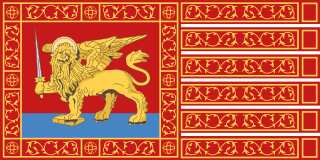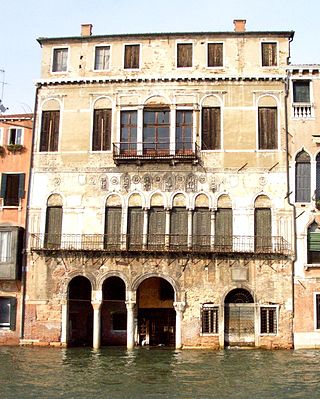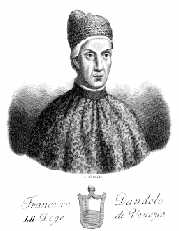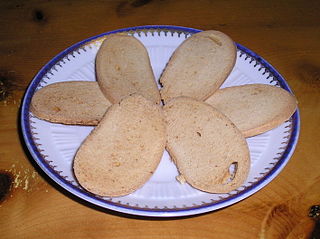
The Republic of Venice, traditionally known as La Serenissima, was a sovereign state and maritime republic with its capital in Venice. Founded, according to tradition, in 697 by Paolo Lucio Anafesto, over the course of its 1,100 years of history it established itself as one of the major European commercial and naval powers. Initially extended in the Dogado area, during its history it annexed a large part of Northeast Italy, Istria, Dalmatia, the coasts of present-day Montenegro and Albania as well as numerous islands in the Adriatic and eastern Ionian seas. At the height of its expansion, between the 13th and 16th centuries, it also governed the Peloponnese, Crete and Cyprus, most of the Greek islands, as well as several cities and ports in the eastern Mediterranean.
Pedro de Sintra, also known as Pero de Sintra, Pedro da Cintra or Pedro da Sintra, was a Portuguese explorer. He was among the first Europeans to explore the West African coast. Around 1462 his expedition reached what is now Sierra Leone and named it. Although according to professor C. Magbaily Fyle this could have possibly been a misinterpretation of historians; there has been evidence of Serra Lyoa being mentioned prior to 1462, the year when de Sintra's expedition reached the coast of Sierra Leone. This would suggest that the person who named Sierra Leone is still unknown. However, if de Sintra did name the area, it is unclear whether he named it after the landforms or climate in the area. According to some the coastal regions resembled lion's teeth while others suggest the thunderstorms sounded like the roar of a lion. Sixteenth century English sailors called the area Sierra Leoa which later evolved to Sierra Leone in the 17th century. The British, prior to the area being colonised, officially adopted the name Sierra Leone in 1787.
Francesco da Mosto is an Italian architect, author, historian, film maker and television presenter. He presented the three BBC 2 series Francesco's Venice (2004) and Francesco's Italy: Top to Toe (2006) where he explored the country in an Alfa Romeo Spider and Francesco's Mediterranean Voyage which sees him sailing aboard the Camper and Nicholsons ketch Black Swan from his home city, Venice, to Istanbul, visiting places including Split, Mostar and Dubrovnik. He presented the two part BBC 2 series: Shakespeare in Italy, (2012).
Francesco's Italy: Top to Toe is a four-part BBC television series hosted by Francesco da Mosto and originally shown on BBC Two from 11 June to 2 July 2006. In the series, da Mosto drives his Alfa Romeo Spider the length of Italy, from North to South, exploring the architecture and traditions in different regions.

The Ca' da Mosto is a 13th-century Venetian-Byzantine style palace, the oldest on the Grand Canal, located between the Rio dei Santi Apostoli and the Palazzo Bollani Erizzo, in the sestiere of Cannaregio in Venice, Italy. Today, it is home to the Venice Venice Hotel.

Francesco Dandolo was the 52nd Doge of Venice. He ruled from 1329 to 1339. During his reign Venice began its policy of extending its territory on the Italian mainland.

Luigi De Giudici was an Italian painter of the Venetian anti-academic movement in the first years of the twentieth century. His works were exhibited at Ca' Pesaro between 1912 and 1920 and at the International Exposition of Paris (1937).

The Domini di Terraferma was the hinterland territories of the Republic of Venice beyond the Adriatic coast in Northeast Italy. They were one of the three subdivisions of the Republic's possessions, the other two being the original Dogado (Duchy) and the Stato da Màr.
This list explores the instances of which the city of Venice, Italy, has been mentioned or alluded to in various media.
Francesco's Mediterranean Voyage is a BBC Television documentary series first aired in 2008. It follows Venetian architect Francesco da Mosto as he follows the historical Venetian trading route from Venice through the Adriatic Sea, Corinth Canal, Aegean Sea and Dardanelles to Istanbul. This route was taken by, among others, his ancestor Alvise da Mosto. Travelling as a member of the crew of the Camper and Nicholsons ketch Black Swan, along the way he stops off at the ports that were visited by the earlier traders and were in many cases part of the Venetian Empire. The series was written by Da Mosto.

The office of Procurator of Saint Mark was one of the few lifetime appointments in the government of the Venetian Republic and was considered second only to that of the doge in prestige. It was routinely occupied by nobles belonging to the most influential families and typically represented the climax of a distinguished political career, although it was often an intermediate position prior to election as doge.

Baicoli are Italian biscuits, originating in the 1700s in the city of Venice. They are made with sugar, butter, flour, yeast, eggs, and salt.

The Senate, formally the Consiglio dei Pregadi or Rogati, was the main deliberative and legislative body of the Republic of Venice.

The Palazzi Mocenigo consist of the following complex of palazzos on the Grand Canal in Venice, Italy:

The Minor Council or Ducal Council was one of the main constitutional bodies of the Republic of Venice, and served both as advisors and partners to the Doge of Venice, sharing and limiting his authority.

The island of Cyprus was an overseas possession of the Republic of Venice from 1489, when the independent Kingdom of Cyprus ended, until 1571, when the island was conquered by the Ottoman Empire.
The Bailo of Corfu was the leader of the Venetian delegation to the island of Corfu who oversaw the affairs of the island while under Venetian rule and protected the commercial and military interests of the Republic of Venice. The first mention of a bailo in Corfu is in 1386 and is found in a Greek chronicle. The bailo of Corfu is also mentioned in a document by historian Marco Guazzo from 1544.
Gregory Dowling is an author, translator, literary critic and Professor of Anglo-American Literature at the Università Ca’ Foscari in Venice.
The Savii or Savi di Terraferma was a board of five senior magistrates of the Republic of Venice, initially charged with the defence of the Republic's possessions in the Italian mainland. Gradually they assumed specific roles pertaining to the supervision of public finances, the military administration, state ceremonies, and urgent ad hoc matters.

The Provveditore Generale da Mar was the most senior peacetime office in the Venetian navy and in charge of governing the Venetian overseas empire.












